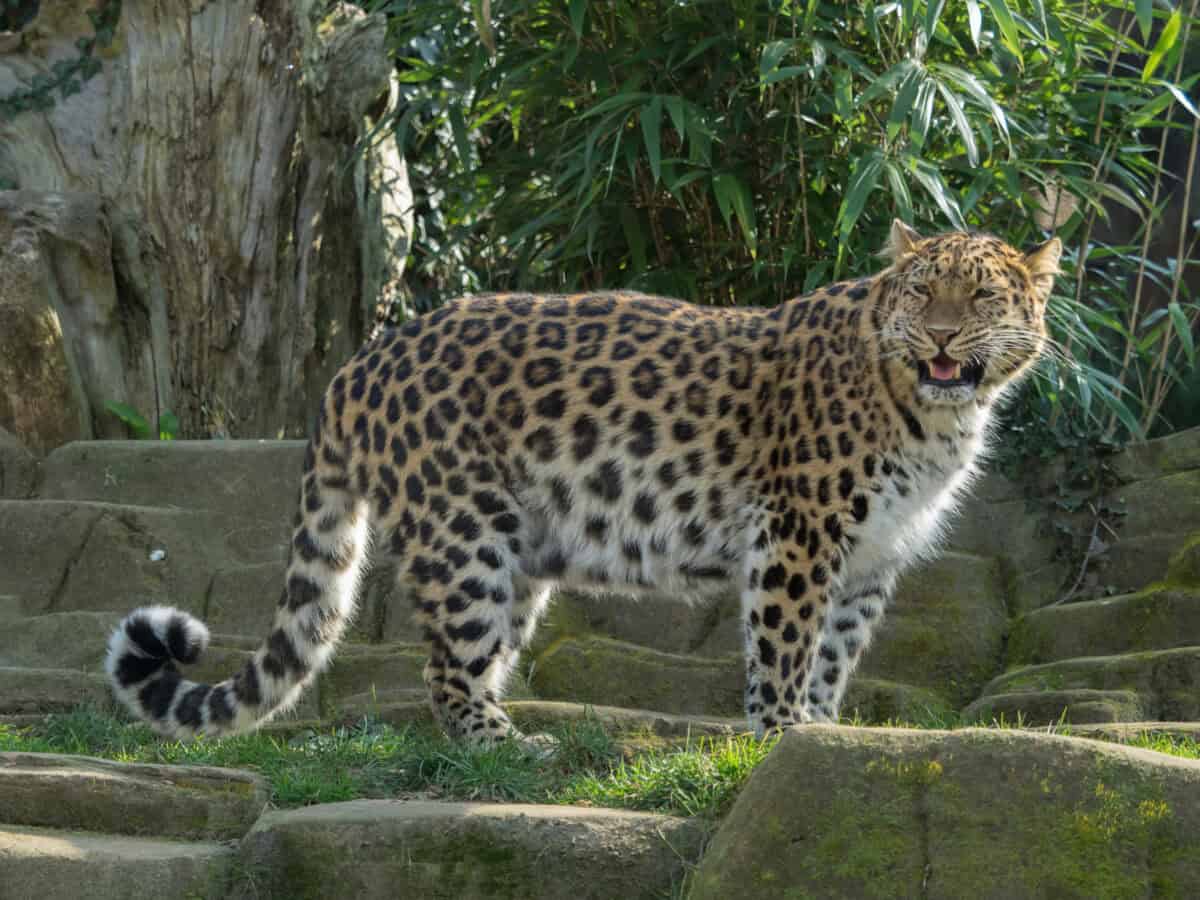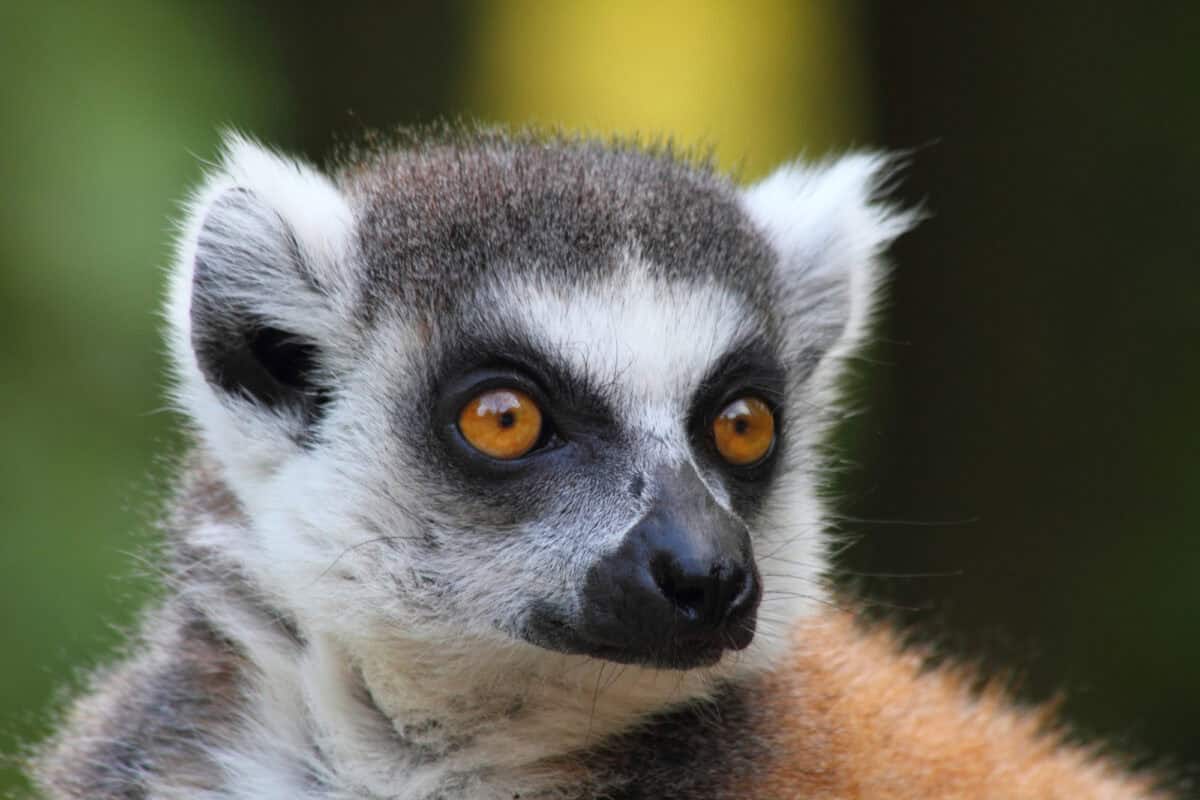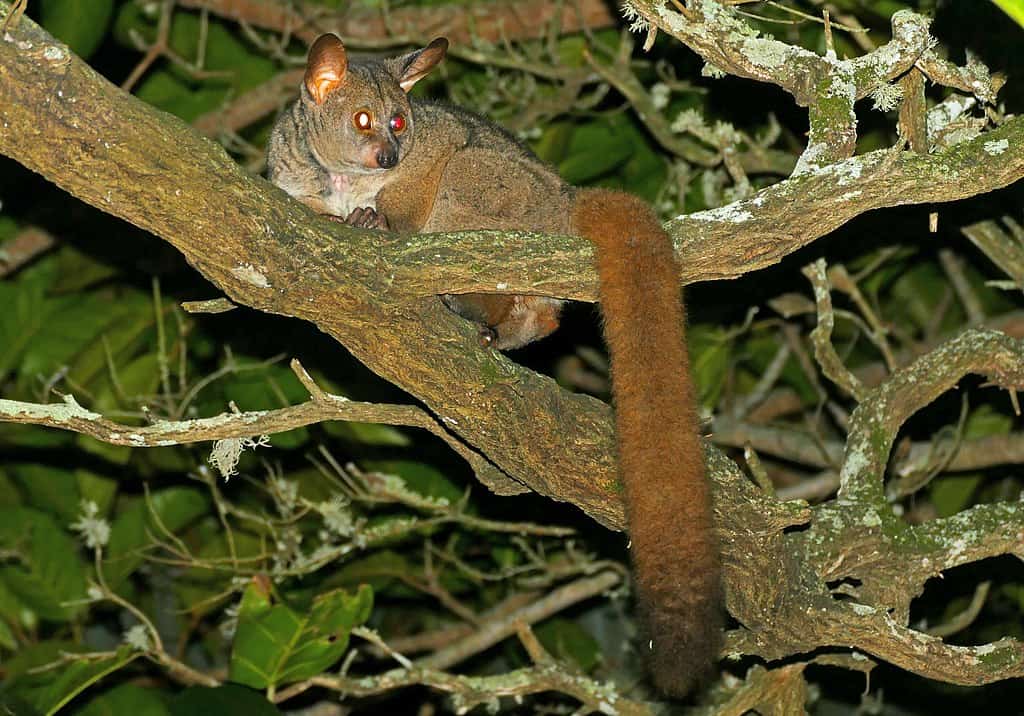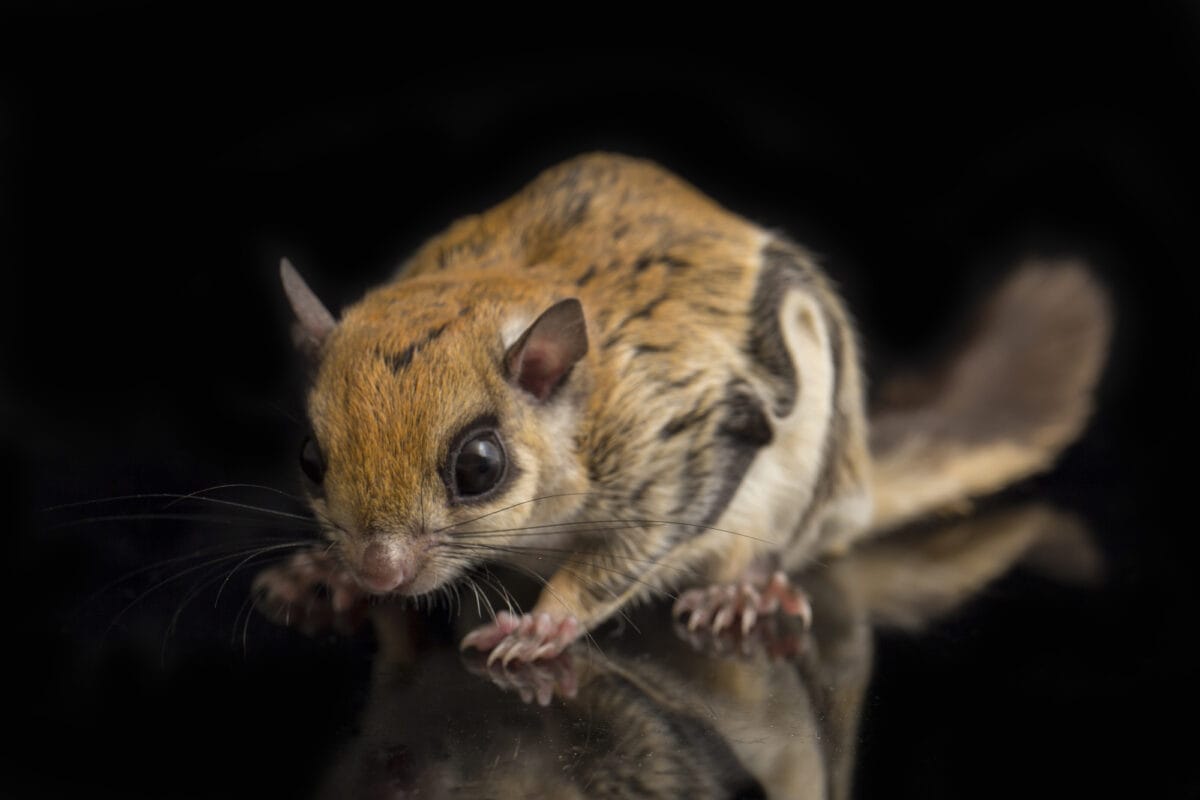When the sun sets and darkness envelops the world, a remarkable transformation takes place in the animal kingdom. As diurnal creatures retreat to their shelters, a diverse array of nocturnal animals emerges to claim the night. These fascinating creatures have evolved specialized adaptations that allow them to thrive in low-light conditions, from enhanced senses to unique hunting strategies. In this article, we’ll explore 15 remarkable wild animals that primarily conduct their lives under the cover of darkness, revealing the mysterious and often unseen world of nocturnal wildlife.
The Nocturnal Adaptation Understanding Night-Active Animals

Nocturnal animals have developed specialized adaptations that enable them to navigate, hunt, and survive in darkness. Most notably, these creatures often possess extraordinarily large eyes with a high concentration of rod cells—photoreceptors that excel in low-light conditions. Many nocturnal species also have evolved enhanced hearing, smell, or specialized sensory systems like echolocation to compensate for limited visibility. Their activity patterns are governed by their internal circadian rhythms, which are essentially biological clocks synchronized with the earth’s day-night cycle. This evolutionary strategy offers several advantages: reduced competition with daytime animals, avoidance of daytime predators, and for many desert-dwelling species, escape from extreme daytime temperatures. Understanding these adaptations gives us insight into the remarkable specialization that nocturnal animals have developed over millions of years of evolution.
13. Owls The Silent Night Hunters

Owls represent some of nature’s most perfectly adapted nocturnal predators. Most of the 200+ owl species worldwide are strictly nocturnal, with specialized adaptations that make them lethal hunters after dark. Their extraordinary night vision comes from extremely large eyes that contain an abundance of light-sensitive rod cells. Perhaps most remarkable is their hearing—many owl species have asymmetrically positioned ear openings that allow them to triangulate sound with astonishing precision, capable of detecting a mouse moving under snow from several feet away. Their specialized wing feathers enable almost completely silent flight, giving prey little warning before attack. The great horned owl, one of North America’s most widespread species, can exert a crushing force of approximately 300 pounds per square inch with its talons—enough to instantly kill most prey. These magnificent birds symbolize the night across many cultures, and their haunting calls have become synonymous with the mystery of darkness.
12. Bats Masters of Echolocation

Bats constitute nearly a quarter of all mammal species on Earth, with most of the 1,400+ species being predominantly nocturnal. Their most famous adaptation is echolocation—a biological sonar system where bats emit high-frequency sound waves and analyze the returning echoes to create detailed mental maps of their surroundings. This remarkable ability allows them to detect objects as thin as a human hair in complete darkness. The common little brown bat can catch up to 1,000 small insects per hour during nocturnal feeding frenzies. While their vision is better than commonly believed, it’s their extraordinary hearing that defines their nocturnal lifestyle. Unlike birds, which tend to glide, bats achieve true powered flight through their modified forelimbs, allowing them to actively pursue flying insects through complex aerial maneuvers. Their ecological importance cannot be overstated—they serve as crucial pollinators for many plants, control insect populations, and disperse seeds across diverse ecosystems worldwide.
11. Raccoons Adaptable Night Foragers

Raccoons have earned their reputation as highly adaptable nocturnal opportunists. While not strictly nocturnal in all cases, these masked mammals conduct the majority of their activities during nighttime hours, especially in areas with human presence. Their night vision is exceptional, complemented by acute hearing and an extraordinary sense of touch. The sensitive nerve endings in their front paws become even more heightened when wet, allowing them to “see” with their hands in a process known as “haptic perception.” This tactile sensitivity helps them locate and identify food items without relying solely on vision. Raccoons are remarkably intelligent, capable of remembering solutions to tasks for up to three years. Their omnivorous diet and problem-solving abilities have helped them thrive in urban environments, where they’ve learned to navigate human structures and access food sources ranging from garbage bins to pet food. These adaptable creatures are most active in the first few hours after sunset and before dawn, when they conduct most of their foraging activities.
10. Leopards Stealthy Night Predators

Leopards epitomize nocturnal stealth and power among big cats. While they may be active during cooler daylight hours in some regions, leopards primarily hunt under the cover of darkness, especially in areas where human presence is significant. Their night vision is estimated to be seven times more sensitive than human vision, allowing them to navigate and hunt effectively with minimal light. Their spotted coat provides perfect camouflage in dappled moonlight and shadow. Unlike many big cats, leopards are extraordinary climbers, often hoisting prey weighing up to twice their own body weight into trees to prevent scavengers from stealing their meals. These solitary hunters have a diverse diet, capable of taking down prey ranging from dung beetles to large antelopes. They’re also remarkably adaptable, thriving in habitats from dense forests to arid deserts across Africa and parts of Asia. Their silent movement and ambush hunting strategy make them particularly successful nocturnal predators, with success rates higher than many other large carnivores.
9. Tarsiers Tiny Nocturnal Primates

Tarsiers are among the world’s most distinctive and specialized nocturnal primates. These small creatures, native to the islands of Southeast Asia, possess the largest eyes relative to body size of any mammal—each eye is approximately the same size as their brain. Unlike many nocturnal animals with reflective eyes, tarsiers lack a tapetum lucidum (reflective layer), instead relying on their enormous eyes to gather available light. Their heads can rotate an astonishing 180 degrees in either direction, providing a full 360-degree field of vision without moving their bodies. This adaptation helps them spot insects and small vertebrates while remaining motionless. Tarsiers are the only entirely carnivorous primates, with their diet consisting primarily of live animal prey like insects, lizards, and small birds. They possess elongated tarsal bones in their feet (hence their name) that enable them to leap extraordinary distances—up to 40 times their body length. Despite their small size (typically weighing between 80-150 grams), they are formidable nocturnal hunters, using their acute vision and remarkable jumping ability to capture prey in the darkness of tropical forests.
8. Aardvarks Nocturnal Termite Specialists

The aardvark, whose name derives from Afrikaans meaning “earth pig,” is a highly specialized nocturnal mammal native to sub-Saharan Africa. These peculiar-looking creatures emerge from their burrows after sunset to begin their nightly feeding activities, which primarily involve consuming ants and termites. An aardvark can consume up to 50,000 insects in a single night using its long, sticky tongue that can extend up to 12 inches. Their sense of smell is remarkably acute—about 40 times more sensitive than a human’s—allowing them to detect termite mounds and ant colonies from considerable distances. Their hearing is equally impressive, capable of detecting the subtle sounds of insect movement underground. While their eyesight is relatively poor, their nocturnal lifestyle and specialized senses make this limitation inconsequential. Aardvarks are powerful diggers, with strong claws that can break into hardened termite mounds and create extensive burrow systems for shelter. These burrows often extend 10-13 feet underground and provide crucial habitat for many other animals when abandoned. Despite their importance in ecosystems and their widespread distribution, aardvarks remain rarely seen due to their strictly nocturnal habits.
7. Slow Lorises Venomous Night Dwellers

The slow loris represents one of the most fascinating nocturnal primates, found in Southeast Asia’s tropical forests. These deceptively cute creatures harbor a remarkable secret—they are the world’s only venomous primates. They produce a toxin from a gland on their arm, which they mix with saliva and deliver through a specialized dentition adapted for venom delivery. Their large, forward-facing eyes provide excellent night vision, while their deliberate, slow movements (from which they derive their name) help them remain undetected by predators and prey alike. Despite their languid appearance, they can strike with surprising speed when hunting insects, small vertebrates, or accessing tree gum, which forms a significant part of their diet. Slow lorises navigate the forest canopy using a form of locomotion called “bridge climbing,” where they rarely jump but instead use their powerful grip to move steadily through branches. Their metabolic rate is remarkably low for a mammal their size, an adaptation that conserves energy and reduces the need for constant foraging. Unfortunately, these fascinating nocturnal primates face serious conservation threats, primarily from habitat loss and the illegal pet trade, which has been exacerbated by viral videos showing captive specimens.
6. Aye-ayes Bizarre Nocturnal Lemurs

The aye-aye is perhaps one of the most unusual nocturnal mammals on Earth, an endangered lemur species endemic to Madagascar. Its most distinctive feature is an exceptionally long, thin middle finger—a specialized digit used for a feeding technique called “percussive foraging.” The aye-aye taps on trees with this finger, listening for the hollow sounds that indicate insect tunnels beneath the bark. Once located, it uses its rodent-like incisors to gnaw through the wood and extracts larvae with its elongated finger. Their enormous ears provide acute hearing that can detect insect movement within wood, while their large eyes enable effective navigation in the darkness of Madagascar’s forests. Aye-ayes are solitary creatures with home ranges of up to 125 acres, spending almost 80% of the night actively foraging. Local superstitions have unfortunately contributed to their endangered status, as some Malagasy communities believe seeing an aye-aye is an omen of death. Scientists estimate fewer than 10,000 individuals remain in the wild, making conservation of these extraordinary nocturnal primates a priority. Their unique ecological niche as percussive insectivores has no parallel among other primates, representing a remarkable example of specialized nocturnal adaptation.
5. Kiwi Birds Flightless Night Foragers

The kiwi bird of New Zealand stands as one of the most unusual nocturnal birds in the world. Unlike most birds, kiwis have evolved to fill an ecological niche more similar to mammals—they’re flightless, have hair-like feathers, highly developed sense of smell, and are strictly nocturnal. Their nostrils are uniquely positioned at the tip of their long beak, allowing them to sniff out worms, insects, and other invertebrates in the forest floor—the only birds known to hunt by smell rather than sight. A kiwi’s olfactory bulb is proportionally larger than that of many mammals that rely primarily on scent. Despite being birds, their skeletal structure and feather type are so atypical that early biologists were confounded by their classification. Kiwis lay eggs that are enormous relative to their body size—a single egg can weigh up to 20% of the female’s body weight, the largest egg-to-body ratio of any bird. Their nocturnal lifestyle likely evolved as a response to the absence of native land mammals in New Zealand’s prehistoric ecosystems, allowing them to occupy a night-active niche that would typically be filled by mammals elsewhere. Today, all five kiwi species face conservation challenges, with predation by introduced mammals being their greatest threat.
4. Flying Squirrels Gliding Night Navigators

Flying squirrels constitute one of the most successful groups of nocturnal rodents, with over 50 species worldwide. Despite their name, these animals don’t truly fly but instead glide using a specialized membrane called a patagium that stretches between their front and back limbs. When extended, this skin flap creates an effective airfoil, allowing them to glide distances of up to 150 feet in a single leap. Their large eyes are perfectly adapted for night vision, containing a high density of rod cells that capture maximum light in dark forest environments. Northern flying squirrels possess a form of biofluorescence, where their fur glows a vivid pink when exposed to ultraviolet light—a trait whose purpose remains under scientific investigation. Unlike many nocturnal animals, flying squirrels maintain a complex social structure, often nesting in groups during winter for warmth conservation. Their diet varies seasonally but generally includes nuts, seeds, fruits, fungi, and occasionally insects or bird eggs. These agile gliders are most active during the first few hours after sunset and before dawn, when they conduct most of their foraging activities. Their nocturnal lifestyle helps them avoid diurnal predators like hawks, while allowing them to exploit food resources with reduced competition.
3. Ocelots Elusive Nighttime Felines

Ocelots are medium-sized wild cats that conduct up to 90% of their hunting and territorial activities during nighttime hours. Native to the Americas, from southern Texas through Central and South America, these beautiful spotted cats possess exceptional night vision—approximately six times more sensitive than human vision in low light conditions. Their retinas contain an abundance of rod cells and a reflective layer called the tapetum lucidum that enhances their ability to detect movement in near-darkness. Ocelots are remarkably agile, capable of climbing, swimming, and leaping with precision to capture prey that includes rodents, rabbits, birds, snakes, and lizards. They maintain extensive territories, with males patrolling areas up to 7 square miles marked with scent, scratches, and urine. Despite their medium size (typically 15-30 pounds), ocelots play an important role as mesopredators in their ecosystems, controlling populations of small mammals and birds. Their nocturnal hunting pattern allows them to minimize competition with larger predators and avoid the extreme daytime heat in many of their tropical habitats. Unfortunately, habitat fragmentation and poaching have led to their designation as a threatened species in many parts of their range, with conservation efforts focused on corridor preservation to maintain genetic connectivity between populations.
2. Bush Babies (Galagos) Acrobatic Night Leapers

Bush babies, also known as galagos, are small, nocturnal primates native to continental Africa. These agile creatures are named for their distinctive infant-like cries that resemble a human baby’s wail. Their enormous eyes dominate their facial features, providing exceptional night vision adapted for their completely nocturnal lifestyle. A reflective layer behind their retinas called the tapetum lucidum creates the characteristic “eyeshine” when light is directed at them in darkness. Bush babies possess extraordinary leaping capabilities, able to jump over 2.5 meters horizontally from a standing start—equivalent to a human jumping more than 40 feet. Their elongated ankle bones act as springs, storing and releasing energy during jumps. Their diet primarily consists of gum from acacia trees, insects, and occasionally small vertebrates or bird eggs. Bush babies mark their territories with urine secreted from specialized glands on their hands and feet, which they distribute by strategic walking patterns throughout their range. These small primates play important ecological roles as seed dispersers and insect controllers in African forest ecosystems. Despite their wide distribution across sub-Saharan Africa, many species face population declines due to habitat loss, particularly from agricultural expansion and logging operations.
1. Pangolins Scaled Nocturnal Insectivores

Pangolins are unique nocturnal mammals instantly recognizable by their full-body covering of protective scales made of keratin—the same material as human fingernails. All eight pangolin species worldwide are primarily nocturnal, emerging from burrows or tree hollows after sunset to begin foraging. Their diet is highly specialized, consisting almost exclusively of ants and termites, with a single pangolin capable of consuming up to 70 million insects annually. They locate prey primarily through smell, as their vision is relatively poor. Upon finding an ant nest or termite mound, they excavate using powerful front claws and extract insects with an extraordinarily long, sticky tongue that can extend up to 16 inches—longer than their entire body in some species. When threatened, pangolins roll into a tight ball, with their scales forming an nearly impenetrable armor that few predators.
Conclusion:

As daylight fades and the natural world slips into shadow, a hidden realm of remarkable creatures awakens. From the silent flight of owls to the eerie glow of flying squirrels, nocturnal animals showcase an extraordinary array of adaptations designed to conquer the darkness. These species have evolved in fascinating ways—enhancing their senses, adjusting their behaviors, and even developing unique anatomies—to not only survive but thrive under the cover of night. Their stories remind us that the world after sunset is far from asleep; it is teeming with life, complexity, and ecological significance. By understanding and protecting these nocturnal animals, we not only preserve biodiversity but also gain deeper insight into the wonders of evolution and the delicate balance of ecosystems around the globe.
- 15 Animals Smarter Than You Think - August 15, 2025
- 14 Most Misunderstood Pets You Should not Overlook - August 15, 2025
- 14 Birds of Prey That Rule the Skies - August 15, 2025

